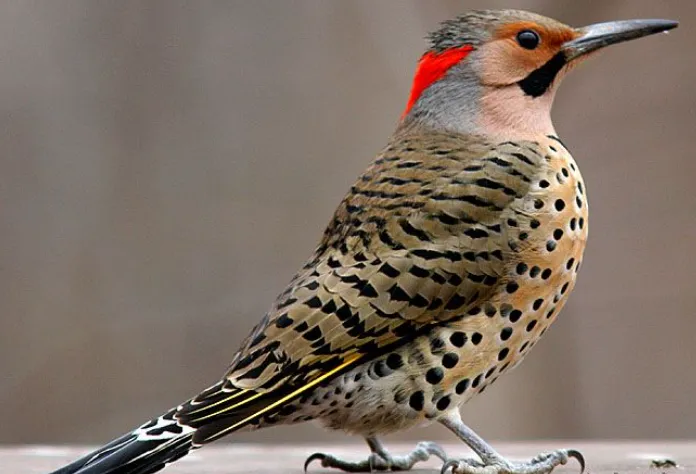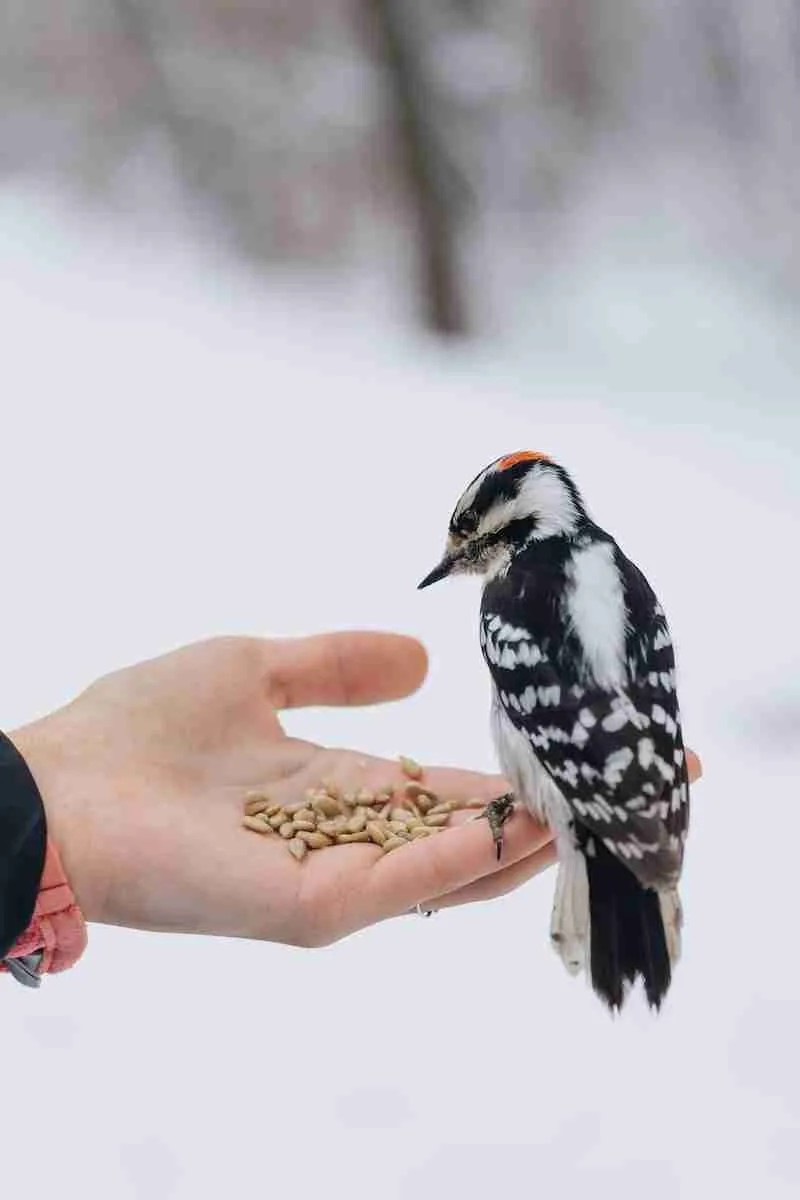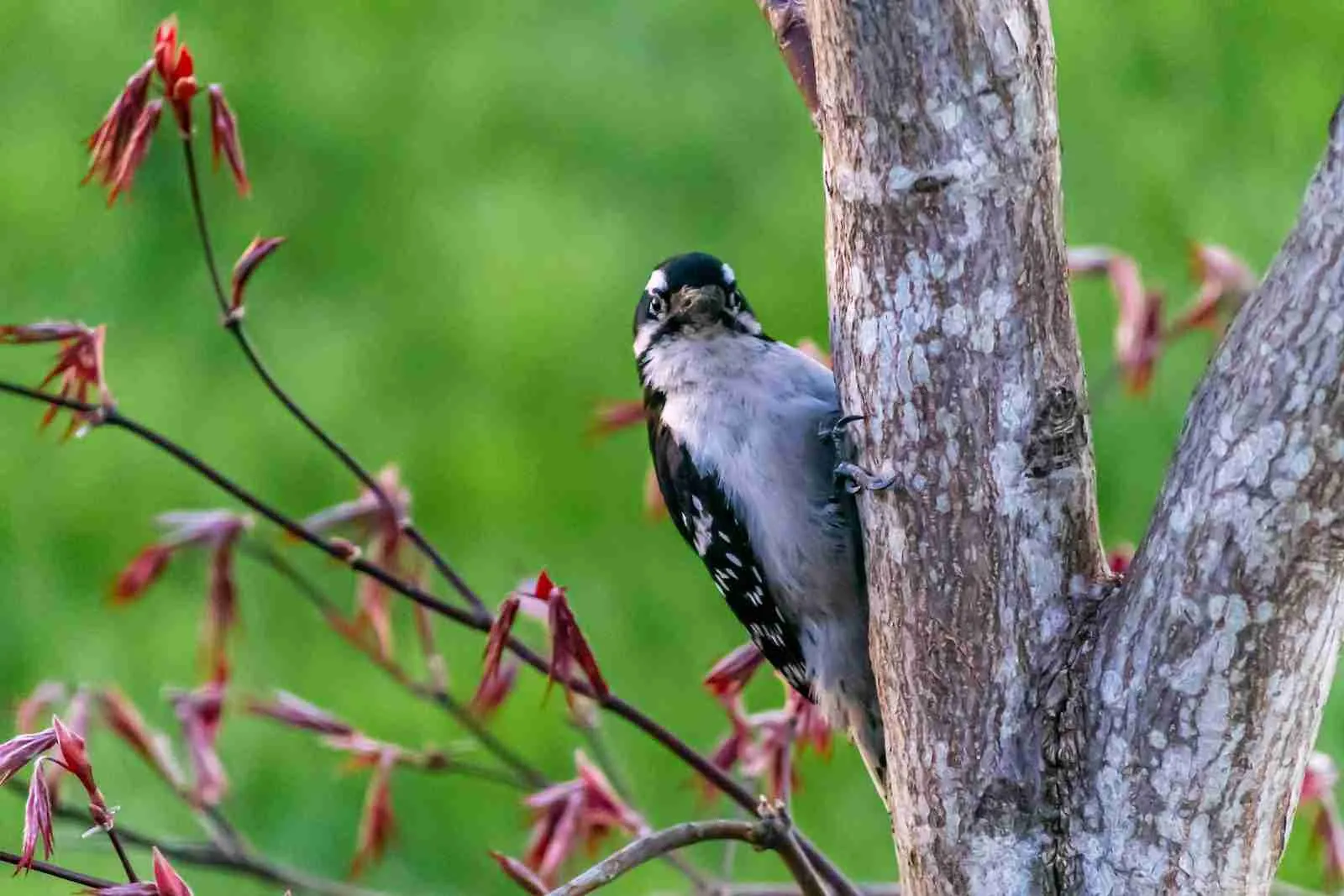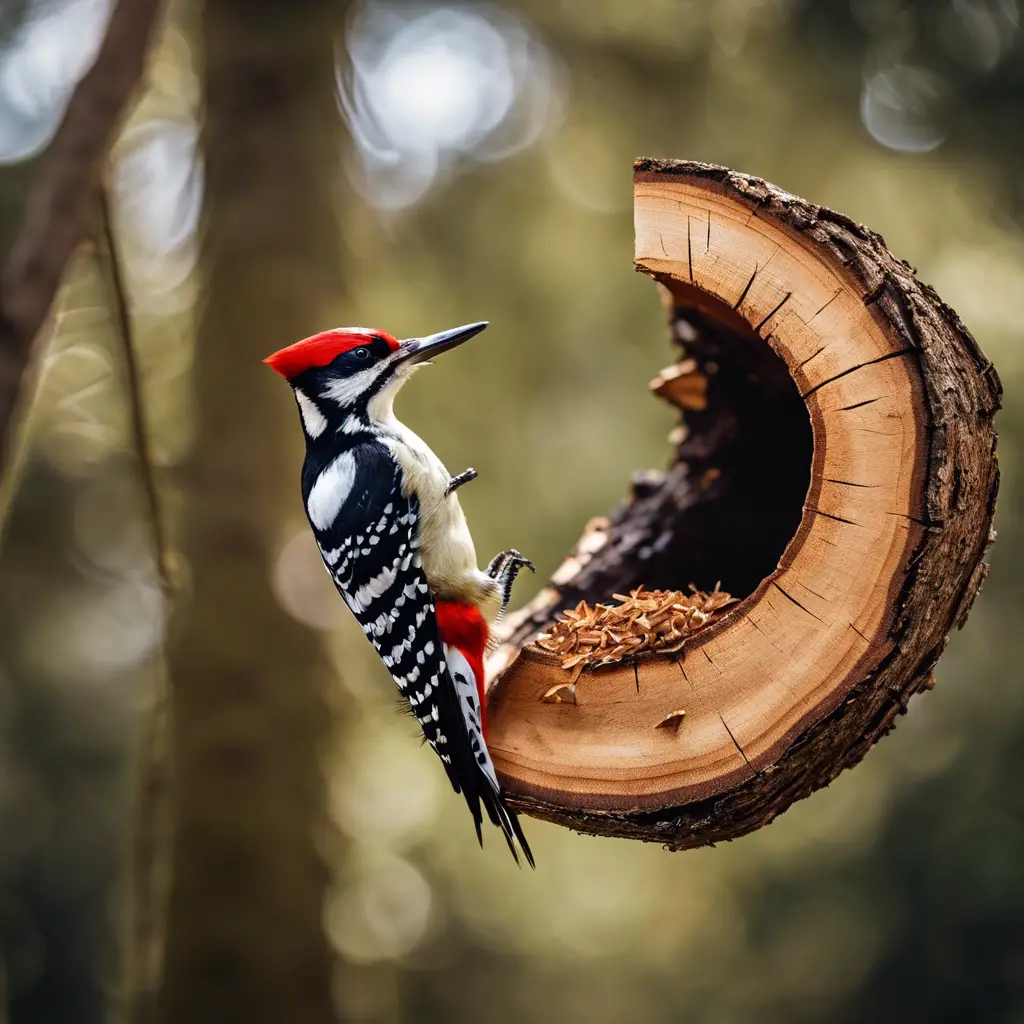We’ll go through the most frequent New Hampshire woodpeckers, along with photos and important information. Only reliable sources were used, and the data were double-checked by an ornithologist.
There are many different types of woodpecker species that can be found in New Hampshire. The most common types of woodpeckers in New Hampshire are the red-headed woodpecker, the downy woodpecker, the hairy woodpecker, and the northern flicker. Each of these birds has unique characteristics that make them stand out from the rest. We will go over what makes each one special and how to identify them.
Most Common Woodpeckers in NH
Northern Flicker
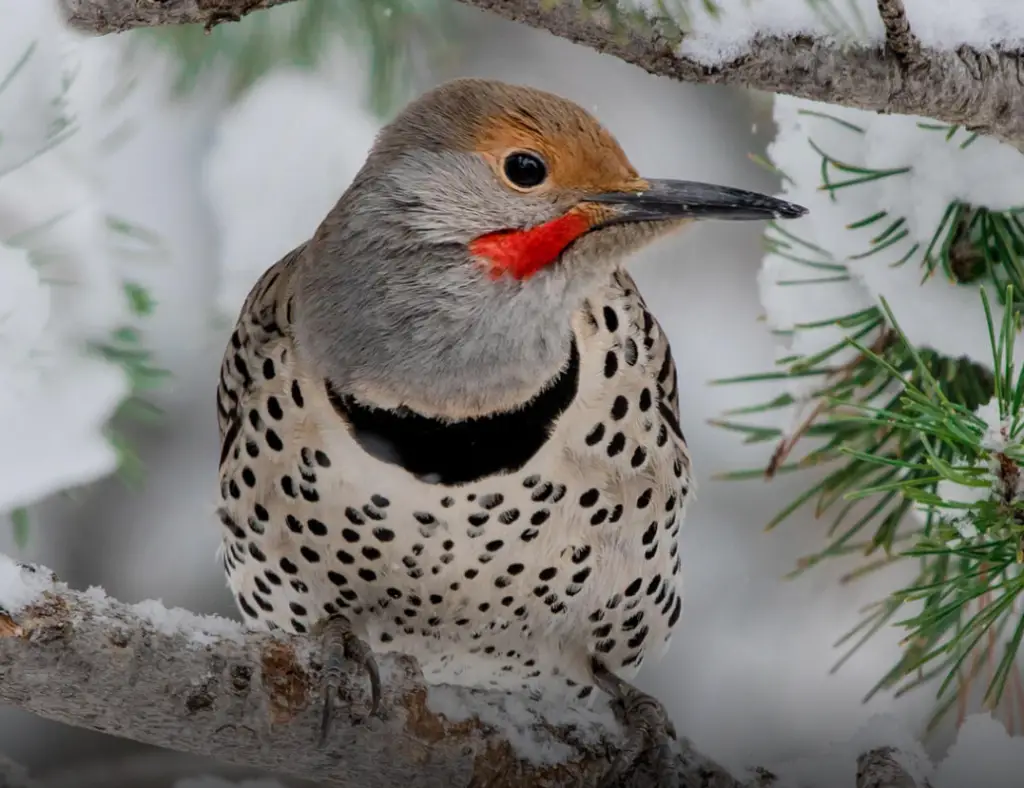
The Northern Flicker is a medium-sized woodpecker that can be found in New Hampshire. They have a red mustache and cap, and black wings with white stripes. These birds are usually seen foraging on the ground or at the edge of forests. They eat insects, seeds, and fruit. Northern Flickers are cavity nesters, and will often use old woodpecker holes to nest in. They are considered a year-round resident of New Hampshire but can be seen migrating through the state during the fall and winter. Northern Flickers are common birds and can be found in many different habitats throughout the state.
Northern Flickers are one of my favorite birds to watch. They are always busy foraging for food, and they have a really cool red mustache! I always enjoy spotting them at the edge of forests or in open fields. If you’re lucky, you might even see one nesting in an old woodpecker hole. Northern Flickers are definitely a common bird in New Hampshire, so keep your eyes peeled the next time you’re out birdwatching!

Red-headed Woodpeckers
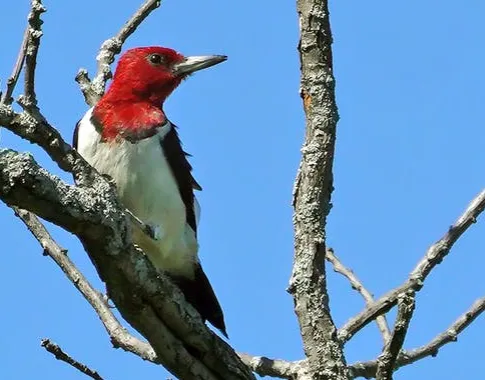
In the springtime, male Red-headed Woodpeckers stake out their territories by drumming on dead trees or utility poles. This rapid tattoo can be heard up to a quarter of a mile away. The way these birds drum is unique; they use their tail feathers as support and pivot from their toes, which are equipped with sharp claws.
Red-headed Woodpeckers are also easily identified by their bright red heads and black wings. They have a white stripe down the middle of their head and neck, and males have a small red spot on their forehead. These birds measure about nine inches long from beak to tail, making them medium-sized woodpeckers.
Although they are not currently endangered, Red-headed Woodpeckers are declining in numbers due to habitat loss. You can help these birds by creating a nesting box or leaving a dead tree on your property. By providing suitable habitat, you can enjoy the sight and sound of these amazing birds for years to come.

Pileated Woodpeckers
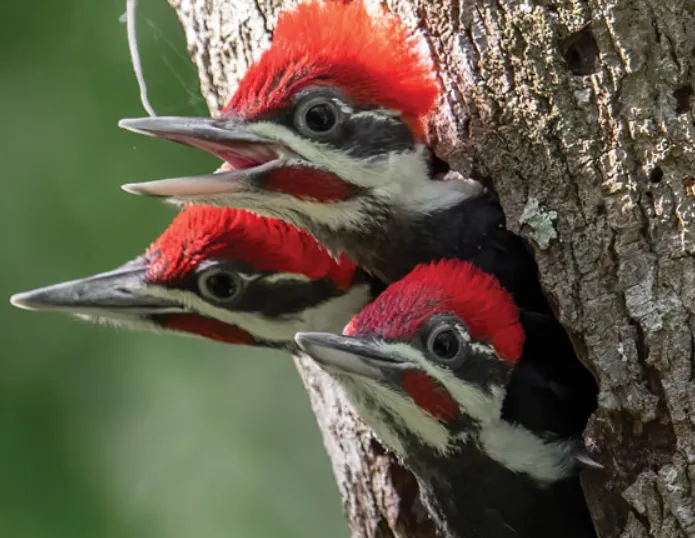
Pileated Woodpecker Scientific Name: Dryocopus pileatus
The Pileated Woodpecker is the second-largest woodpecker in North America and is easily identified by its characteristic red crest. These birds are usually about 18 inches long and have a black body with white stripes down the sides of their heads. They also have a bright red mustache!
Pileated Woodpeckers are very versatile birds and can be found in a variety of habitats including mature forests, parks, and even suburban neighborhoods. They feed on a wide range of foods, including insects, nuts, berries, and sap.
Pileated Woodpeckers are known for their loud hammering sound, which they use to communicate with other woodpeckers and to mark their territory. They are also known for their impressive drilling skills, which they use to extract insects from tree bark.
Pileated Woodpeckers are considered to be a threatened species in New Hampshire, so it is important to protect these birds by creating a habitat suitable for them and by not harming them intentionally or unintentionally. If you are lucky enough to see this woodpecker in New Hampshire, be sure to take some time to admire this amazing bird!

American Three-Toed Woodpecker
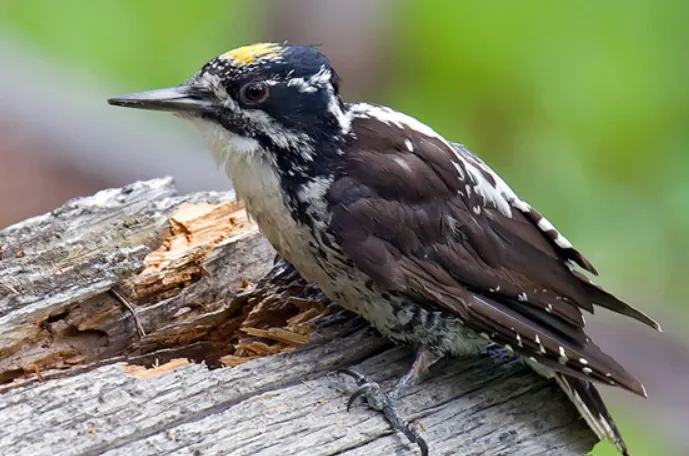
write about characteristics of American Three-Toed Woodpecker
The American Three-Toed Woodpecker is a medium-sized woodpecker with a black back, white belly, and three toes on each foot. They have a long, straight bill that is slightly upturned at the end.
These woodpeckers are usually seen flying high in the sky or perched on a tree trunk. They eat insects, berries, and nuts. American Three-Toed Woodpeckers are found in forests across North America. In the winter, they often form small flocks and can be seen feeding on suet at backyard bird feeders.
These woodpeckers nest in tree cavities, which they excavate themselves. Both the male and female take turns incubating the eggs, and both parents help feed the young.
American Three-Toed Woodpeckers are common in New Hampshire. They can be seen year-round, but they are most active during the spring and summer.
These woodpeckers are fascinating birds to watch and are a great addition to any backyard bird list. Thanks for reading! I hope you enjoyed learning about the American Three-Toed Woodpecker.

Downy Woodpeckers
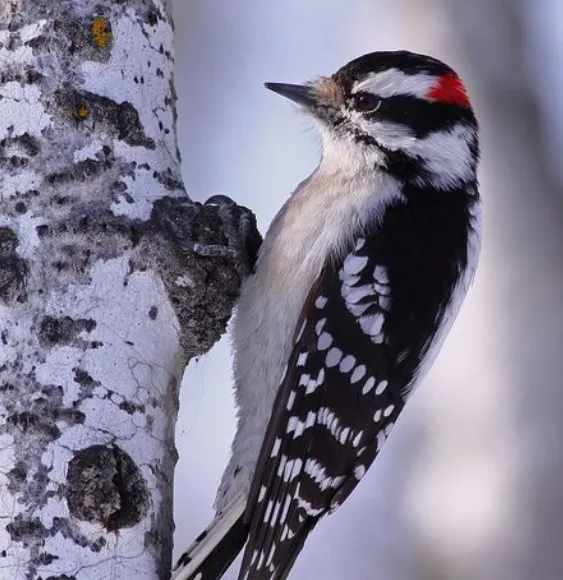
Downy Woodpecker Scientific Name: Dryobates pubescens
The Downy Woodpeckers are the smallest woodpeckers in New Hampshire. Adults are six to seven inches long with a wingspan of ten to eleven inches.
The male has a red patch on the back of his head, while the female does not. Both sexes have black and white stripes running down their backs. The belly is white and the wings and tail are black.
Downy Woodpeckers eat insects, mainly caterpillars, but also ants, wasps, beetles, and spiders. They forage on tree trunks and branches for food, often tapping trees to find hidden insects. Downy Woodpeckers can be found in forests, woodlands, and parks throughout North America.
If you see a Downy Woodpecker, you may hear its distinctive “chick-a-dee” call. This bird is fun to watch as it hops up and down tree trunks in search of food. The next time you’re out for a walk in the woods, keep your eyes peeled for these cute little birds!

Related article: Types of Woodpeckers in Connecticut
Hairy Woodpecker
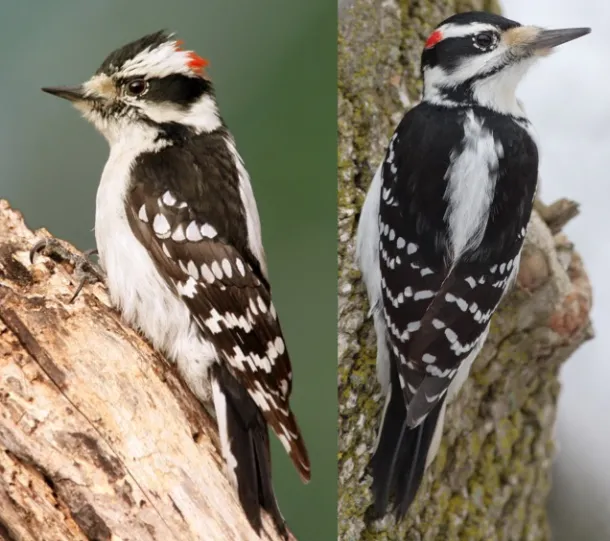
Hairy Woodpecker Scientific Name: Dryobates villosus
The Hairy Woodpecker is a medium-sized woodpecker that is common in North America. The adult Hairy Woodpecker has a black back, wings, and tail.
The head, face, and underparts are white, and there is a large patch of red on the lower back. males have a red cap that extends from the forehead to just above the nape, while females have a red cap that is limited to the nape.
The bill is long and stout, and the legs and feet are black. The Hairy Woodpecker is similar in appearance to the Downy Woodpecker but can be distinguished by its larger size, longer bill, and red cap.
The Hairy Woodpecker is a cavity nester, and typically excavates its own nest hole in a dead tree or limb. The nest is made of wood chips and is lined with grass, moss, or other material.
The female lays three to six eggs, which are incubated by both parents for about two weeks. The young birds remain in the nest for another two weeks and are fed by both parents.
The Hairy Woodpecker is a common resident of forests and woodlands across North America. It feeds on insects, which it extracts from tree bark or branches with its long bill. It also eats berries and seeds.
The Hairy Woodpecker is a shy bird and is typically reluctant to come too close to humans. It is a quiet bird, and its calls are rarely heard.

Black-backed Woodpeckers
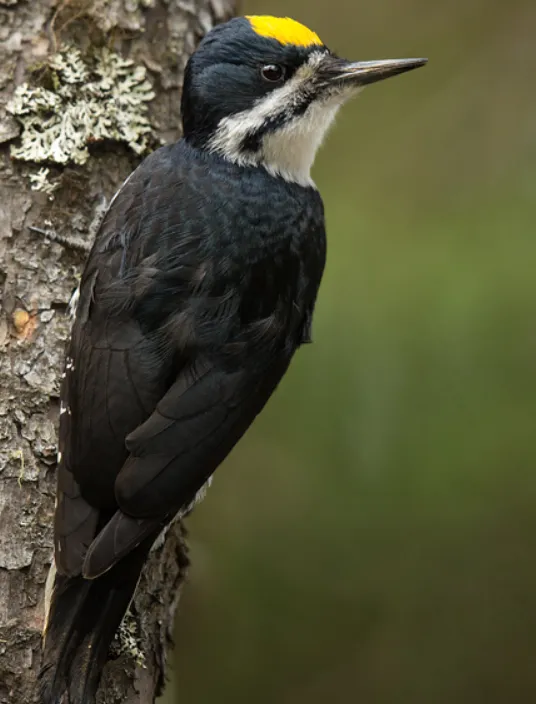
Black-backed Woodpeckers are medium-sized woodpeckers, measuring about 12 inches in length. They have black backs and white bellies, with a redhead.
Black-backed Woodpeckers are the only North American woodpecker with a completely black back.
Black-backed Woodpeckers live in forests, typically coniferous forests. They are found in the northern parts of North America, including New Hampshire. Black-backed Woodpeckers eat a variety of foods, including insects, spiders, and berries.
If you’re lucky enough to spot a Black-backed Woodpecker in the wild, you’ll be able to see its unique colors and patterns. These woodpeckers are truly a sight to behold!

Yellow-bellied Sapsucker
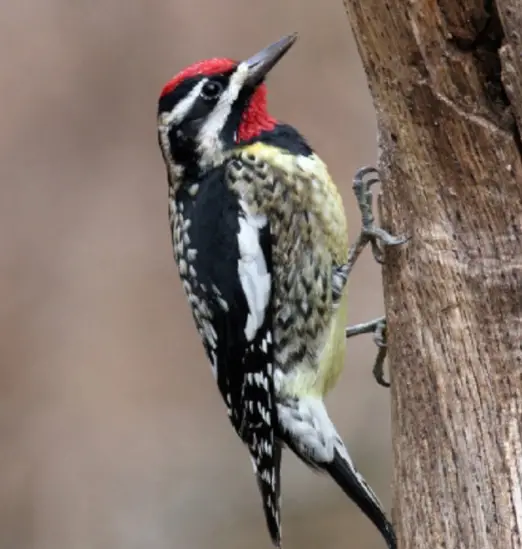
The Yellow-bellied Sapsucker is a medium-sized woodpecker with a black cap and back, white throat and belly, yellow flanks, and barred sides. Males have a red forehead. These birds drill small holes in trees to drink the sap.
They also eat insects attracted to the sap. In winter, they eat berries and seeds. You can find them in the woods and orchards. Look for them on tree trunks, often high off the ground. Hear their loud “yank yank” calls in springtime. The Yellow-bellied Sapsucker is a medium-sized woodpecker with a black cap and back, white throat and belly, yellow flanks, and barred sides. Males have a red forehead.
These birds drill small holes in trees to drink the sap. They also eat insects attracted to the sap. In winter, they eat berries and seeds. You can find them in the woods and orchards.
Look for them on tree trunks, often high off the ground. Hear their loud “yank yank” calls in springtime.

Red-bellied Woodpecker
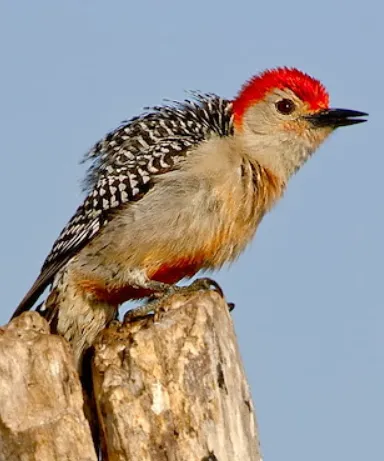
The red-bellied woodpecker is a medium-sized woodpecker with a black back, white underparts, and a red cap. The adult male has a red line down its belly, while the female has a buffy line.
These birds are found in woods across much of the eastern United States. They nest in tree cavities and eat insects, fruits, and nuts. The red-bellied woodpecker is a member of the family Picidae, which includes all the woodpeckers of the world.
The red-bellied woodpecker is a beautiful bird that is relatively easy to identify. It gets its name from the reddish coloration on its lower belly. This bird has a black back, white underparts, and a red cap. The adult male has a red line down its belly, while the female has a buffy line.

***
Are woodpeckers protected in New Hampshire?
Woodpeckers are protected in New Hampshire by both state and federal law. Under the Migratory Bird Treaty Act, it is illegal to kill, capture, or disturb woodpeckers without a permit. Woodpeckers are also listed as threatened species in New Hampshire under the state’s Endangered Species Act.
While there is no specific law protecting woodpeckers in New Hampshire, they are protected under the state’s general wildlife laws. These laws make it illegal to kill or capture any wild animal without a permit.
Should you shoot woodpeckers?
The short answer is no. Woodpeckers are protected by law and it is illegal to kill them without a permit. In addition, woodpeckers play an important role in the ecosystem and help control insect populations.
If you are having problems with a woodpecker, there are non-lethal ways to deter them such as using a scarecrow or predator decoy.
What is the largest woodpecker in New Hampshire?
The largest woodpecker in New Hampshire is the pileated woodpecker. This bird can be up to 20 inches long and has a wingspan of 36 inches. The pileated woodpecker is a black and white bird with a red crest. It is common throughout most of New Hampshire.
What does it mean when woodpeckers pecking at your house?
It could mean that the woodpecker is looking for food, or it could be a territorial display. If you are concerned about the woodpecker damaging your house, there are non-lethal ways to deter them. You can consult with a wildlife specialist to figure out the best course of action.

An avid ornithologist, zoologist and biologist with an unwavering passion for birds and wild animals.
Dr. Wilson’s journey in ornithology began in childhood and led him to obtain a Ph.D. in Ornithology from the prestigious Avian Research Institute. He has worked closely with renowned experts in the field and conducted extensive research and field studies globally.

